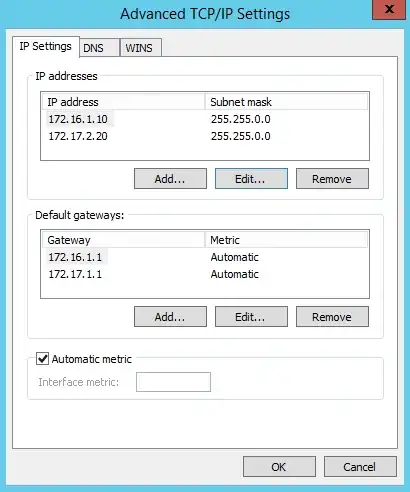First time posted on serverfault. We have a bunch of windows CE devices that hate our DHCP server (likely a bug) but lets ignore that.
Say we can't use DHCP at all. But we have devices that may connect one of two Gateways wirelessly, say one gateway has ip XXX.Y0.1.1 the other has XXX.Y1.1.1 both with a subnetmask 255.255.0.0.
Is there any possible way to set a windows CE machine to have a static IP address, and hardcode in that it would try first, XXX.Y0.1.1 if that doesn't work then XXX.Y1.1.1.
